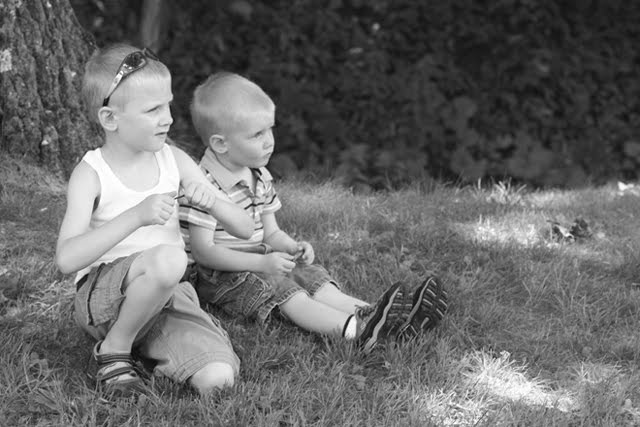
We've been doing lots of bird watching the last couple weeks and thought it would be a great learning experience for the boys. Here are some interesting facts we've learned:
The House Finch is one of the most common birds in North America. They are among the most human-friendly birds. As such, you can see them often living in areas where humans also reside. Though this is the case today, the House Finch’s natural habitat has not always been where humans are located. Its natural habitat ranges from deserts which are uninhabited to the chaparral as well as coniferous forests. However, due to the ever changing landscape brought about by man’s expansion, the House Finch is commonly found in the cities as well.
The House Finch can be found both in the eastern and western part of North America. The western House Finches have expanded into British Columbia as well as parts of Montana. This was still due largely to the expansion of man’s habitat as well. The eastern House Finches, on the other hand, descend mainly from caged birds. This happened in 1940 when illegally caged birds were released by pet shop owners in Long Island, New York. The premise is that these birds were trapped all the way from Los Angeles. It is said that for a long time, the released birds barely survived in Long Island. It was only after a long period of adjustment that they were able to find their homes in the buildings of New York. In any case, these released birds are now the ancestors of the eastern House Finches as we know them today.
The House Finch can be found both in the eastern and western part of North America. The western House Finches have expanded into British Columbia as well as parts of Montana. This was still due largely to the expansion of man’s habitat as well. The eastern House Finches, on the other hand, descend mainly from caged birds. This happened in 1940 when illegally caged birds were released by pet shop owners in Long Island, New York. The premise is that these birds were trapped all the way from Los Angeles. It is said that for a long time, the released birds barely survived in Long Island. It was only after a long period of adjustment that they were able to find their homes in the buildings of New York. In any case, these released birds are now the ancestors of the eastern House Finches as we know them today.
This little bird is about the size of a sparrow, with a length of anywhere from 5 inches to 6 inches (13 – 15 cm). The male and female have differences when it comes to appearance and coloring. The male’s crown and chest are both red and so is its rump. The female, on the other hand, is mostly grayish brown all over with some blurry streaks of red on the sides and the breast. Both male and female House Finches have stubby bills and square-tipped tails.
House Finches are not migratory birds. In fact, they are termed permanent resident birds. No matter where they may be located, House Finches have always been known to be gregarious birds. They form huge flocks during the breeding season and they roost closely to each other – sometimes they even settle as close as to touching each other. We can thus say that House Finches are sociable birds – both towards each other and humans as well.
House Finches are not migratory birds. In fact, they are termed permanent resident birds. No matter where they may be located, House Finches have always been known to be gregarious birds. They form huge flocks during the breeding season and they roost closely to each other – sometimes they even settle as close as to touching each other. We can thus say that House Finches are sociable birds – both towards each other and humans as well.
House Finches are known to be monogamous birds. That is, they find a mate and stick with each other during the breeding seasons. A couple can have several broods each year. During the courtship period, House Finches exhibit an interesting display, much like other song birds. Their expected life span – barring any unfortunate accidents, that is – is about 9 to 10 years.
House Finches will nest in window ledges, holes in buildings, conifer trees, hanging planters and old nests. The female builds most of the nest, a shallow cup of grasses, twigs, leaves and lined with feathers and other fine fibers. The female lays 3 to 6 bluish or greenish white eggs with black spots near the large end. The female incubates the eggs for 13 to 14 days. Both parents feed the nestlings and remove fecal sacs by eating them. The nestlings leave the nest 12 to 15 days after hatching. The male continues to feed the young for about two more weeks while the female builds a new nest and lays the next brood of eggs.

No comments:
Post a Comment